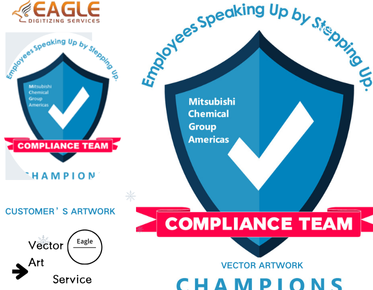How Do I Convert Any Image to a Vector?
Converting images to vector format is a common task in graphic design, whether you're working with logos, illustrations, or intricate patterns. Vector graphics are made up of paths rather than pixels, which means they can be scaled infinitely without losing quality. Let's explore some of the methods and tools you can use for converting images to vectors.
Understanding Vector and Raster Images
Before diving into conversion techniques, it's crucial to understand the difference between raster and vector images. Raster images are composed of pixels, making them resolution-dependent. This means that when you enlarge a raster image, it may look pixelated. On the other hand, vector images comprise paths defined by mathematical equations, allowing them to maintain clarity at any size【4:0†source】.
Common Tools for Vector Conversion
There are several tools available for vector conversion. Popular among them are Adobe Illustrator and CorelDRAW, often used by professionals due to their advanced features and precise controls. These tools allow you to trace raster images manually or use automated tracing features to convert them into vectors【4:0†source】.
For those looking for an online solution, Vector Magic is a highly recommended platform. It offers an intuitive interface that allows users to easily upload their images and convert them to vectors with just a few clicks. Another handy tool is Inkscape, an open-source alternative that provides robust vector conversion capabilities.
Steps for Converting an Image to a Vector
Select a Suitable Image
The first step involves selecting the right image for conversion. Ideally, start with a high-contrast image that has distinct edges and minimal color nuances. This simplifies the tracing process and results in a cleaner vector conversion.
Using Vector Software
Once you have your image ready, import it into your chosen vector software. Utilize the "Image Trace" or "Live Trace" feature commonly found in software like Adobe Illustrator. Adjust the trace settings to match the level of detail you want to retain. Simplify the image by reducing the number of anchor points and curves for a smoother vector outcome.
Refinement and Editing
After tracing, take time to refine and edit the paths to ensure the vector graphic accurately represents the original design. Most software provide tools to adjust path placement, curve smoothness, and anchor point manipulation. This is often where professional designers might choose to employ the expertise of services like Eagle Digitizing, known for their precise vectorization work【4:0†source】.
The Role of Eagle Digitizing
Eagle Digitizing specializes in converting raster images to high-quality vector graphics. Their services ensure crisp, scalable designs suitable for various printing methods and digital displays. They offer vectorizing services for a wide range of applications, including logo creation, custom t-shirts, and promotional materials. Their team leverages advanced techniques to achieve accurate color separations and intricately detailed vectors【4:0†source】.
Benefits of Using Vector Graphics
The primary advantage of vector graphics is their scalability. Unlike raster images, vectors don't lose clarity when resized. This makes them perfect for branding materials that need to be adapted to different sizes, from business cards to billboards. Additionally, vectors typically have smaller file sizes, which saves storage space and loads faster when used digitally【4:0†source】.
Choosing a Vector Conversion Service
If manual conversion seems daunting, or if precision is necessary, opting for a raster to vector conversion service might be beneficial. Companies like Eagle Digitizing provide expert services, employing skilled digitizers to transform your images into professional-grade vectors.
Exploring Future Trends
As technology advances, so do the methods for vectorizing images. The future of vector conversion will likely see increased automation powered by artificial intelligence, further simplifying the process while enhancing accuracy. Moreover, the integration of virtual reality and augmented reality in design could offer new avenues for using vector graphics creatively.
Whether you're a professional designer or a hobbyist, understanding vector conversion will enhance your design toolkit. With the continued evolution of vector software and services, this process is set to become even more accessible and efficient.



